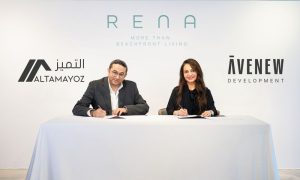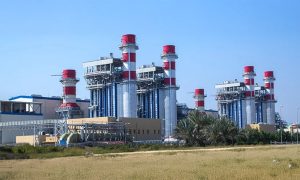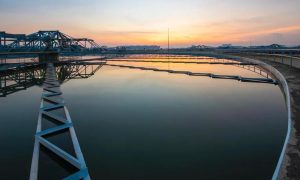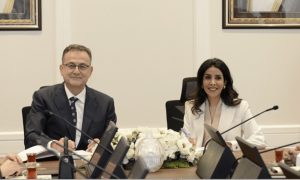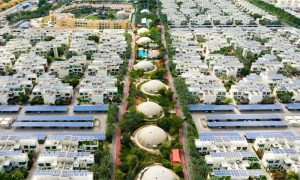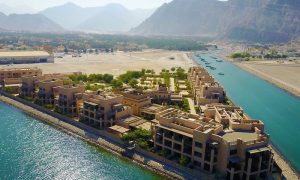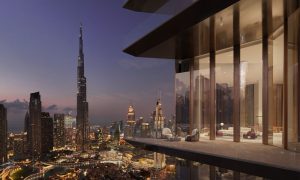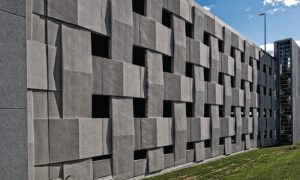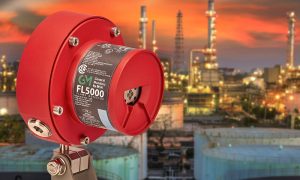Oman on a Mission
Oman’s construction industry is predicted to grow at nearly 6% year-on-year with 24 mega-projects planned for Muscat alone. Melanie Mingas finds out how the country is planning to rebuild its economy in less than a decade

Like other Gulf states, Oman’s development strategy is set out in a series of five-year plans, pioneered by the government.
Since the first five-year plan was launched in 1976, the country has developed economically, socially and physically, with progress particularly linked to a number of petrochemical and industrial mega-projects; collaboratively securing the country’s wealth and increasing GDP 35 times since 1970.
[facts]
$3.7b
The estimated value of Oman’s construction industry in 2010
[/facts]
This year marks the first year of the eighth cycle, which will see investment ploughed into establishing a tourism industry that will become the Sultanate’s primary economic driver by 2020. As a result, the Omani construction industry was valued at US $3.7 billion in 2010, with growth expected to reach an annual rate of 5.8% between 2010 and 2014. Sectors within the industry, particularly cement production continue to enjoy some of the largest gross margins of all the GCC countries, according to the Oxford Business Group.
There will also be many harbour and port-related development activities along this coastal area, creating gateway cities” -Arjan Weerstand, Salalah Port.
One of two staple elements of this escalation will be the emerging tourism sector, as detailed in the 2011-2016 development strategy. The second, infrastructure developments, will include the creation of six new airports, the dual expansions of Muscat and Salalah Airports, port and power developments and the construction of a coastal railway line.
“In the current cycle there are many infrastructure developments such as roads and, of course, the railway, which will follow 2000km of coastline,” explains Sam Oliver, UK Trade and Investment Office (UKTI) at the British Embassy, Muscat.
“The government is then planning to select various locations along that line for development, where most of the inhabitable land is connected by the new rail infrastructure. There will also be many harbour and port-related development activities along this coastal area, creating gateway cities.”
Running in tandem with this initiative is Vision 2020; a concept established at the end of the country’s “first phase” of development, in 1995.
Outlining Oman’s goals for phase two of its development, the plan aims to create economic and financial stability; reshaping the role of government and globalising the national economy.
The diversification programme will encourage the youngest generation of the Omani workforce to pioneer development in digital technologies, renewable resources, infrastructure and other areas identified as crucial to development.
Majestic Muscat
[facts]
5.8%
The predicted growth rate in Oman’s construction industry between 2010 and 2014.
[/facts]
The most significant of the current development projects will focus on the capital. Titled ‘Majestic Muscat’, 24 mega projects will be undertaken across the city, with a remit to “enhance the quality of life” for residents and visitors alike.
Aiming to develop a “cohesive, inclusive, safe, healthy and vibrant city with opportunity for all”, the projects will include development of the waterfront and corniche areas (see box-out), in collaboration with a number of prestigious international design firms, such as Denmark-based Gehl Architects, Australia’s Project Architecture and Parson’s International.
[facts]
2020
The deadline has been set to make tourism Oman’s primary economic driver by 2020
[/facts]
“The various strands of this development will be in harmony with the economic, civic and commercial aspirations of the city; providing a new look and feel, while reflecting the country’s values and heritage in a modern setting,” explains Oliver.
Dry wadis will be “transformed into architectural features” including promenades, with old campsites renovated into new residential settlements; featuring a focus on commerce and leisure developments.
In a drastic contrast to similar remits in other Gulf states, the developments in Oman will work to preserve the country’s famous rural landscapes.
“You will not find the jagged edges of chrome and steel, but a relatively unbroken skyline dotted with domes, minarets and occasional landmarks of trade and commerce all blending into an aesthetic whole.
“The project will be a stunning testament to the renaissance of, not just the metropolis, but the country as a whole,” Oliver explains.
Developing infrastructure
[facts]
2011
This year marks the start of the eighth five-year development plan, which will see investment ploughed into the burgeoning tourism industry
[/facts]
Supporting these developments will be a number of infrastructure projects, including the expansion of Salalah Port; with the general cargo quay extended by 1200m.
Currently under evaluation from the Omani government’s tender board, 41 parties showed interest in the tender, with 19 submitting bids for the $195.6 million contract. It was a response that senior manager of project development and implementation, Arjaan Weerstand, describes as “substantial proof of market recovery”.
For the power plants, we are going to employ Omani nationals to work alongside Siemens team during implementation”
“The decision to expand specifically this terminal was triggered by the growth of the Salalah Freezone in 2007 and 2008, with the start of the construction of the Salalah Methanol plant and the increase of limestone and other commodities.”
Undergoing an extensive design phase which addressed the needs of all terminal users, the project is Oman’s first public-private partnership (PPP).
Additional projects will see the construction of six new airports across the country and the regeneration of two further airports in Muscat and Salalah.
The Muscat expansion, due for completion in 2014, will increase capacity to 12 million passengers annually; with additional phases increasing this figure to 48 million by 2050. Runway upgrades will also see the airport able to handle the world’s largest plane.
Both airport contracts were awarded to Cowi and Larsen Architects and Consulting Engineering, with project management run by Airport de Paris Ingenierie.
Extensions at Salalah Airport will increase passenger capacity to one million within three years, up from 258,000 in the first half of 2010.
In addition, six new airports will be constructed in Adam, Haima, Shaleem, Al Duqm, Ras Al Had and Sohar.
Described by the Oxford Business Group as the “most ambitious” of all the projects, Al Duqm will also develop a port and dry dock, refinery and petrochemical complex, power and desalination infrastructure. There will be an industrial area and a free-trade zone complex, as well as tourism and residential projects.
Major contracts to build two 750MW power projects have been awarded to Siemens. Barka 3 and Sohar 2 will generate electricity with surplus power used to generate steam for a turbine. It is one of a number of key projects which has seen a rise in demand for Omani workers. “Siemens plans to invest in significant resources and manpower in Oman, upon the award of projects,” says Siemens Oman, chief executive officer, Markus Strohmeier.
“For the power plants, we are going to employ Omani nationals to work alongside the Siemens team during the implementation. It is our plan for the Omani colleagues to take on a long-term role during the operation and maintenance phase of these plants,” Strohmeier adds.
Having worked in the country for 35 years, Siemens’ new contracts are supported by further collaborative developments in gas turbine technology, with several consortia.
Commenting on the significance of the Omani market for the company, Stronhmeier adds: “The development of the oil and gas industries, as well as the solid approach Oman has taken in optimising its infrastructure, makes it key to our own growth plans.
“Many of our technologies have been deployed in Oman in the early days and have given Siemens successful business references. Siemens wants to be a reliable partner in building up the infrastructure in Oman with our global experience and local know-how of customer requirements.”
Destination Oman
In the country’s quest to re-brand itself as a tourism hub, a number of resorts and hotels will be developed, along with a multi-billion dollar convention centre. However, unlike that of its GCC neighbours, Oman’s ambition will see the country building to demand, rather than flooding a newly-created market, and therefore risking oversupply.
Spearheaded by Omran, the tourism development and investment arm of the Omani government, the first completed project was the site for the Second Asian Beach Games Muscat 2010; delivered on budget within 900 days. Other projects include the Oman Convention and Exhibition Centre, in addition to hotel and resort developments throughout the country.
Omran is responsible for master-planning and development of the projects and the management of a large portfolio of hotels.
“Over recent years, Oman has taken major strides forward in attracting tourists to our many leisure resorts and hotels,” says Omran’s HE Dr Rajiha bint Abdul Ameer bin Ali.
“Our strategy has always been to target the business sector too and this investment will provide us with an outstanding venue for conferences and exhibitions,” he adds.
Omran plans to invest $1.8 billion in the 10,000 capacity Oman Convention and Exhibition Centre, located near Seeb.
The centre’s exhibition halls will be ready by mid-2013, while the auditorium and the first of several planned hotels are expected to be completed by the end of 2013.
Summit of ambition
Supporting the construction industry across all sectors, the inaugural Omani Construction Summit was held in Muscat this January.
Deemed the “biggest gathering of industry professionals and leading players,” the four-day event hosted 35 conference speakers, 14 exhibitors and 240 construction professionals.
“The summit represented the biggest gathering in the sultanate of industry professionals and leading industry players that have a prominent role in the implementation of many major projects throughout the sultanate,” comments CJ Paul, general manager of organiser Global Exhibitions and Conferences (GEC).
The summit was jointly delivered by GEC and US-based International Quality and Productivity Centre (IQPC), organiser of the Saudi Urban Transport Conference, Tall Buildings Middle East and Tunnels and underground Construction Middle East, among other events.
Key focus areas during the summit included infrastructure, particularly the Omani National Rail Project; residential and tourism developments and the Salalah Port extension.
“At the Oman construction Summit, many talks focused on the industry picking up again. The fact is that the Middle East has not been impacted by the crisis, as for instance Europe was,” said Weerstand, who spoke about the Salalah Port expansion at a summit conference.
“Although no one knows if the crisis is really over there was indeed an optimistic atmosphere at the event,” he adds.
The pace of construction has seen demand for expatriate workers soar; in 2010 it was announced that thousands more would be needed to strengthen the existing 850,000-strong expatriate community and plug a national skills gap, particularly in civil engineering and labour.
[facts]
Vision 2020 at a glance
“To promote economic and financial stability in Oman”
• Reshape the role of the Government in the national economy
• Broaden private-sector participation
• Diversify the economic base and sources of national income
• Globalise the Omani economy
• Upgrade the skills of the Omani workforce to promote higher employment
• Develop human resources in the industry
[/facts]
Currently, expatriate workers make up nearly 30% of Oman’s 2.9 million population; an 8% increase on 2009 figures.
According to the UKTI office, other issues in the industry include short-term obstacles to new company start-ups, due to local regulations and a lack of communication between the relevant departments.
But the body maintains that such obstacles are merely communication problems rather than legislative barriers to trade and expansion within the country.
“There can be a general lack of cohesion between government departments; for instance all the relevant agencies must be approached individually, so things can take time depending on what you are doing,” says Oliver.
Yet despite the superficial barriers, investment in development is strong with major projects on course to meet due completion dates.
“The government is heading the major infrastructure projects with support from the private sector, while private-sector projects focus on malls and resorts,” Oliver adds.
“Around the country you can see that there are signs of activity.”
Majestic Muscat Project Partners:
• Sultan Qaboos Boulvard, WS Atkins, Oman
• Seeb Seafront Plaza, Architecture Studio, France
• Al Mawalih Souk Gehl Architects, based in Denmark
• Waterfront Square at Shatti al Qurum, Gehl Architects
• Seeb Waterfront, Parsons International
• Muttrah Business District, Gehl Architects, Denmark
• Al Qurum Festival Square, Gehl Architects, Denmark
• Muttrah Corniche, Gehl Architects, Denmark
• Hawiyat Najim Park, Jenson and Skodvin Architects, Norway
• The Minarate, Lundgaard and Tranberg Architects, Denmark
• Landscaping projects by Atelier Jaqueline Osty Et Associes, based in France
• Al Azaiba, Atelier Jaqueline Osty Et Associes, France
• Naseem Park, Atelier Jaqueline Osty Et Associes, France
• Al Barkat Park, Muscat Municipality, Oman
• Al Khuwair and Activity Hub, Project Architecture, Australia
• Al Hamriyah Terraced Park, Project Architecture, Australia
• Al Jami Street Upgrade, ProjectArchitecture, Australia
• Muscat Plaza, Project Architecture, Australia
• Ruwi Central Business District, Project Architecture, Australia
• Al Amerat Square, Muscat Municipality, Oman
• Wadi al Kabir Park, Project Architecture, Australia
• Al Khuwair Vegetable Market, Snohetta, Norway
• Muttrah Fish Market, Snohetta, based in Norway
• Wadi Adai Pedestrian Bridge, Snohetta, Norway
